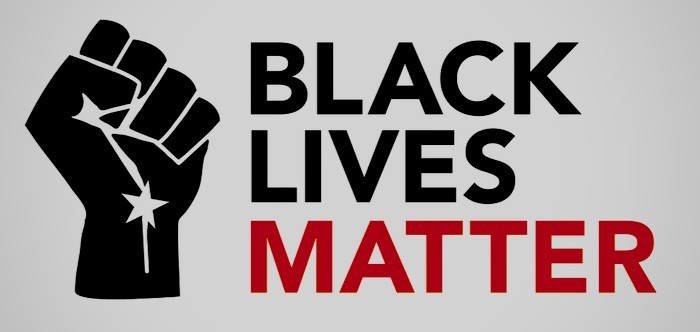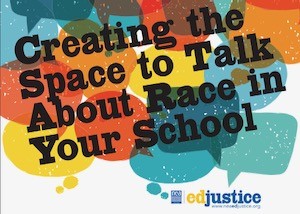Teaching Civics Has Never Mattered More

A Wrenching Moment
Whether it’s protests about police violence and racism or defiance of government orders to wear a mask during a pandemic, the most fundamental issues of our democracy are being played out every day in front of millions of people.
This unique time in history, a confluence of pandemic, prejudice and protest, makes teaching civics more important than ever.
A Teachable Moment
Children are not born knowing the basic ideas of democracy. It is up to each generation to teach them. And that is a central role of our public schools.
Can you and your children answer these basic questions about our democracy?
- What rights do we have to protest racist actions by the government? (1st Amendment)
- How much force can the police use to keep the peace? (4th and 8th)
- Can the government restrict our rights in order to protect public health? (14th)
What Does Civics Teach?
Civics is not just a class. It is a topic woven through many classes from elementary through high school grades. The teachers are not "civics" teachers but classroom teachers with their main focus on many subjects. In total, civics instructs students about how our government works, which can help put today’s events in context. But civics does a lot more. Intentional instruction about civics can help students become engaged, responsible citizens. These classes can help students develop skills to make decisions based on facts and issues rather than personalities and attacks. It's not just about "teaching civics" — it's about conveying civic values: concern for the rights and welfare of others, fairness, and a sense of public duty. It matters for our democracy that everyone understands how to participate and make a difference.
Time to Talk About Race
Discussion is critical to developing a civic understanding of controversial issues. And today, racism is at the top of the list. Here are some resources to start the conversation.
- The National Education Association has resources about race, including classroom lesson plans and guides on how to have tough conversations with peers and students.
- Teaching Tolerance provides examples of how elementary, middle and high schools teach about Black Lives Matter.
- Lessons, films, books, readings, and general teaching guides are available at Black Lives Matter at School Week of Action.
- Resources on the History of Policing and Today's Calls for Reform provides context for older students.
- Education Week has an extensive list of Classroom Resources for Discussing Racism, Policing, and Protest.
How Well is Your School Teaching Civics?
Luckily, California’s updated History-Social Science frameworks emphasize civic learning and have many resources for K-12 classrooms. But there is a big difference between strong state resources and what happens at school.
What Does A Great Civic Education Program Look Like?
The gold standard, which is part of California’s civics frameworks, is described in Guardian of Democracy: The Civic Mission of Schools. It highlights six practices that high quality civics programs use:
- Classroom instruction in government, history, law, and democracy
- Discuss current events and controversial issues
- Service Learning (Provide students the opportunity to apply what they learn in the curriculum through community service.)
- Extracurricular activities (Opportunities to get involved in school or community)
- Student participation in school governance
- Simulations of democratic practices:
How many of those practices does your school provide to all students K-12?
Recognizing Excellence
California recognizes outstanding civics programs through Civic Learning Awards. Below are examples. (You can find the rubric on how schools are scored here. It will help you compare your school to these award winners.)
|
Civic Learning Award Winners |
|
|---|---|
|
La Costa Heights Elementary School, San Diego County |
Fifth graders picked a state bill to research and advocate for with their state legislators. Students chose to focus on pay equity with Assembly Bill 271 and presented their findings and recommendations to lawmakers. Students also helped design and install 40 environmentally friendly drop boxes in the community for voters to cast absentee ballots. |
|
South Junior High School, Orange County |
Students prepare and deliver two-minute “soapbox” speeches that include a call to action on issues of importance, such as the death penalty, gun laws, and college tuition. They later deliver their speeches before a panel of local judges. The school also created its own “Soapbox Night,” giving students the opportunity to present issues they are passionate about in a public platform. |
|
Savanna High School, Orange County |
All students participate in the Raising Student Voice and Participation program. Over the course of a year, each class identifies and seeks solutions to a problem on campus. In Economics classes, students use Google Maps to choose a vacant lot and create a video to pitch a valuable project for the community. Government class students can train as poll workers and many work 15-hour shifts on Election Day. |
A Bit of Inspiration
This video shows how one high school has become a laboratory of democracy.
Tags on this post
CivicsAll Tags
A-G requirements Absences Accountability Accreditation Achievement gap Administrators After school Algebra API Arts Assessment At-risk students Attendance Beacon links Bilingual education Bonds Brain Brown Act Budgets Bullying Burbank Business Career Carol Dweck Categorical funds Catholic schools Certification CHAMP Change Character Education Chart Charter schools Civics Class size CMOs Collective bargaining College Common core Community schools Contest Continuous Improvement Cost of education Counselors Creativity Crossword CSBA CTA Dashboard Data Dialogue District boundaries Districts Diversity Drawing DREAM Act Dyslexia EACH Early childhood Economic growth EdPrezi EdSource EdTech Education foundations Effort Election English learners Equity ESSA Ethnic studies Ethnic studies Evaluation rubric Expanded Learning Facilities Fake News Federal Federal policy Funding Gifted Graduation rates Grit Health Help Wanted History Home schools Homeless students Homework Hours of opportunity Humanities Independence Day Indignation Infrastructure Initiatives International Jargon Khan Academy Kindergarten LCAP LCFF Leaderboard Leadership Learning Litigation Lobbyists Local control Local funding Local governance Lottery Magnet schools Map Math Media Mental Health Mindfulness Mindset Myth Myths NAEP National comparisons NCLB Nutrition Pandemic Parcel taxes Parent Engagement Parent Leader Guide Parents peanut butter Pedagogy Pensions personalized Philanthropy PISA Planning Policy Politics population Poverty Preschool Prezi Private schools Prize Project-based learning Prop 13 Prop 98 Property taxes PTA Purpose of education puzzle Quality Race Rating Schools Reading Recruiting teachers Reform Religious education Religious schools Research Retaining teachers Rigor School board School choice School Climate School Closures Science Serrano vs Priest Sex Ed Site Map Sleep Social-emotional learning Song Special ed Spending SPSA Standards Strike STRS Student motivation Student voice Success Suicide Summer Superintendent Suspensions Talent Teacher pay Teacher shortage Teachers Technology Technology in education Template Test scores Tests Time in school Time on task Trump Undocumented Unions Universal education Vaccination Values Vaping Video Volunteering Volunteers Vote Vouchers Winners Year in ReviewSharing is caring!
Password Reset
Search all lesson and blog content here.
Login with Email
We will send your Login Link to your email
address. Click on the link and you will be
logged into Ed100. No more passwords to
remember!















Questions & Comments
To comment or reply, please sign in .
Alisa Sabshin-Blek August 25, 2020 at 9:34 pm
Vivian Chan July 31, 2020 at 2:37 pm
Anna Meza June 26, 2020 at 12:51 am